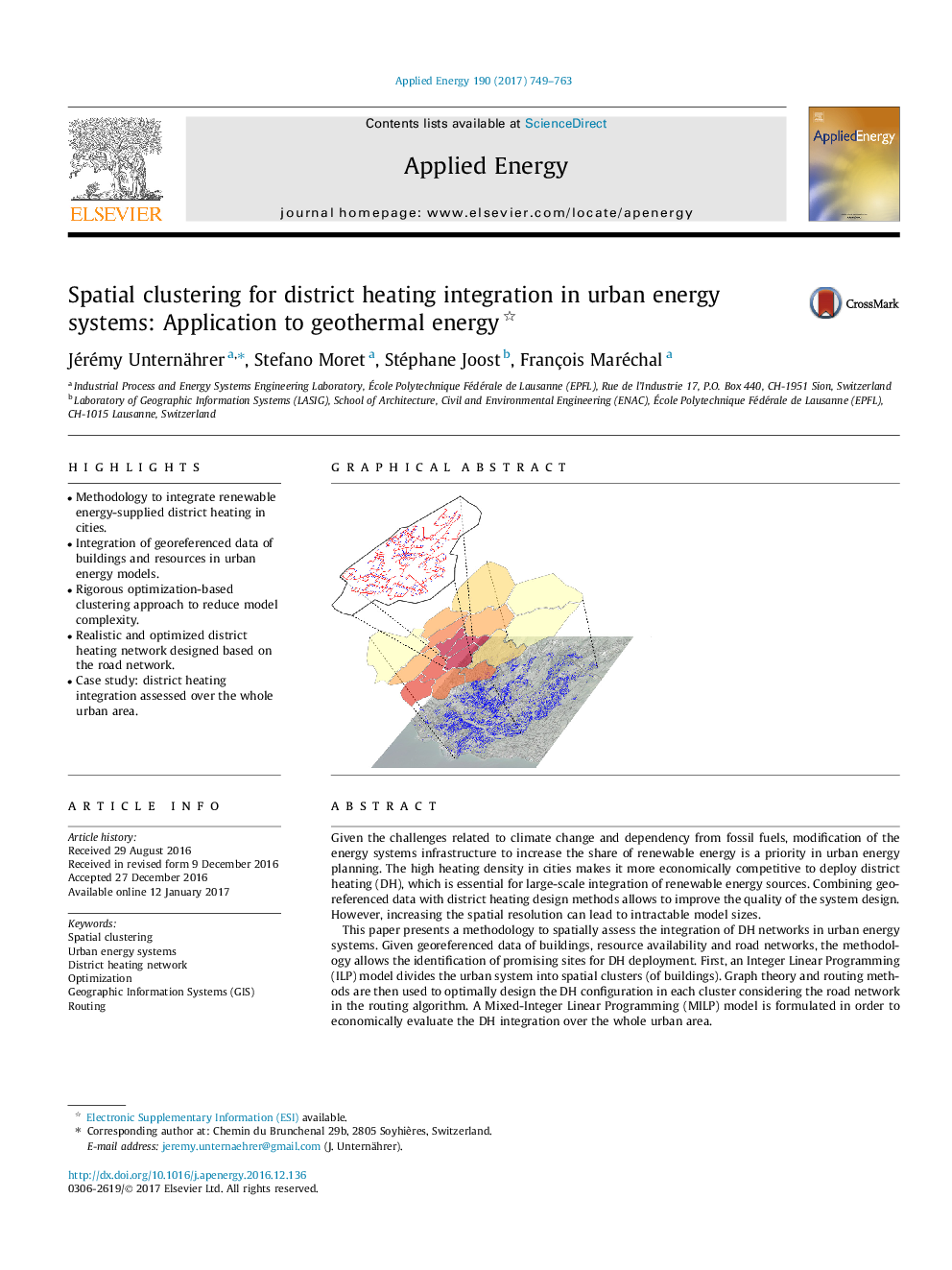| کد مقاله | کد نشریه | سال انتشار | مقاله انگلیسی | نسخه تمام متن |
|---|---|---|---|---|
| 6478589 | 1428100 | 2017 | 15 صفحه PDF | دانلود رایگان |
- Methodology to integrate renewable energy-supplied district heating in cities.
- Integration of georeferenced data of buildings and resources in urban energy models.
- Rigorous optimization-based clustering approach to reduce model complexity.
- Realistic and optimized district heating network designed based on the road network.
- Case study: district heating integration assessed over the whole urban area.
Given the challenges related to climate change and dependency from fossil fuels, modification of the energy systems infrastructure to increase the share of renewable energy is a priority in urban energy planning. The high heating density in cities makes it more economically competitive to deploy district heating (DH), which is essential for large-scale integration of renewable energy sources. Combining georeferenced data with district heating design methods allows to improve the quality of the system design. However, increasing the spatial resolution can lead to intractable model sizes.This paper presents a methodology to spatially assess the integration of DH networks in urban energy systems. Given georeferenced data of buildings, resource availability and road networks, the methodology allows the identification of promising sites for DH deployment. First, an Integer Linear Programming (ILP) model divides the urban system into spatial clusters (of buildings). Graph theory and routing methods are then used to optimally design the DH configuration in each cluster considering the road network in the routing algorithm. A Mixed-Integer Linear Programming (MILP) model is formulated in order to economically evaluate the DH integration over the whole urban area.The proposed methodology is applied to an example case study, evaluating the use of geothermal energy (deep aquifer) for direct heat supply. The results of the optimization show the interest of deploying geothermal DH in some of the clusters. The profitability of DH integration is strongly affected by the spatial density of the heating demand.
262
Journal: Applied Energy - Volume 190, 15 March 2017, Pages 749-763
